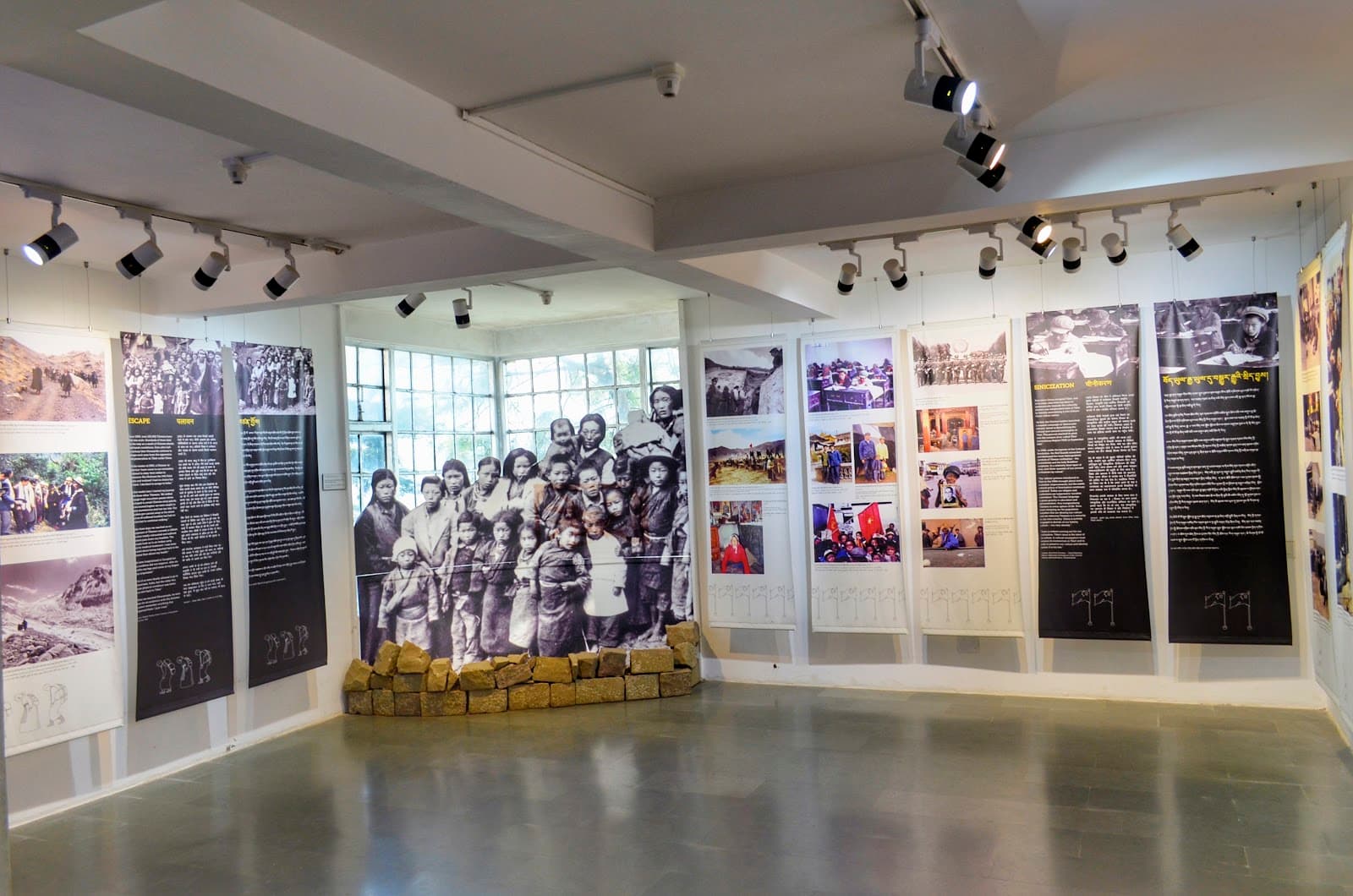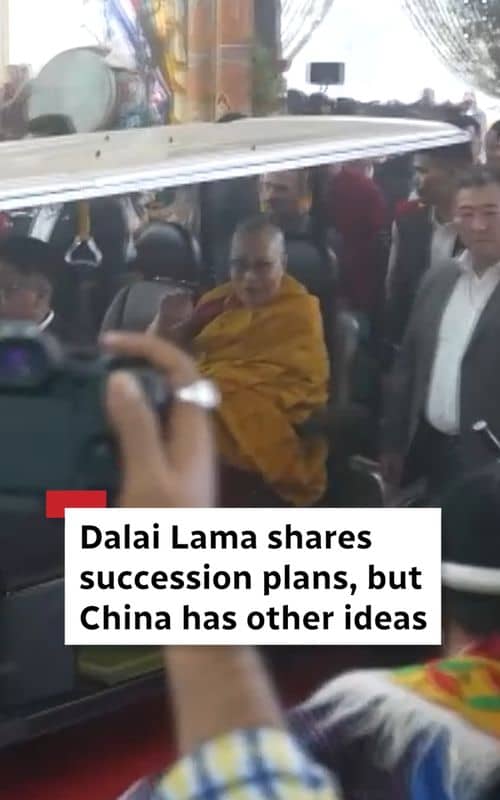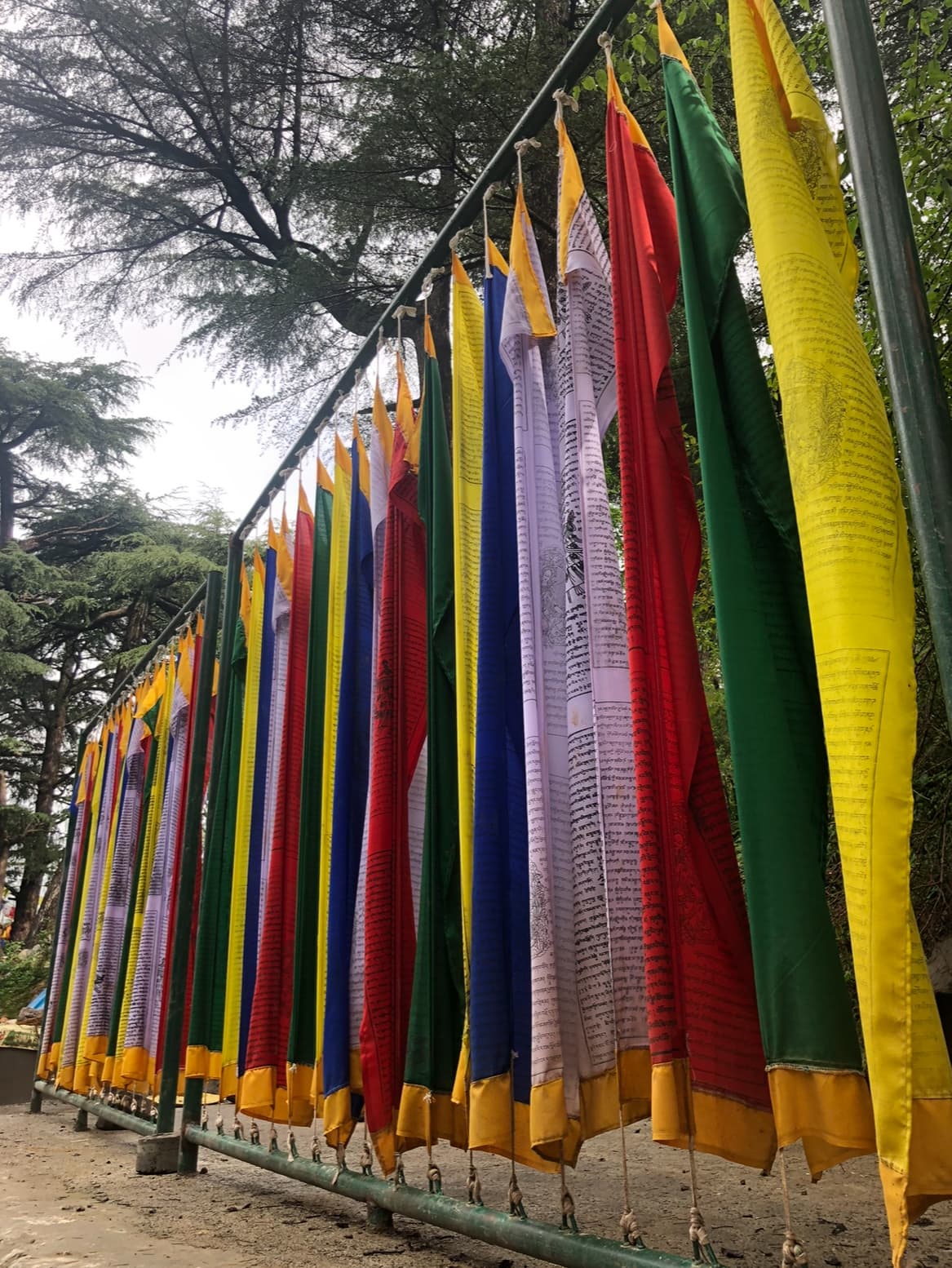
Tibet Museum
A poignant museum dedicated to preserving and showcasing the rich history, culture, and resilience of the Tibetan people.
Highlights
Must-see attractions

Social
From TikTok & Reddit
Best Time
Fewer crowds, more reflection time.

Tibet Museum
Best Time
Fewer crowds, more reflection time.
Highlights
Must-see attractions
A poignant museum dedicated to preserving and showcasing the rich history, culture, and resilience of the Tibetan people.
"A must visit to understand the evolution of the Tibetan people. Very rich in information."

Allocate 2+ Hours
Don't rush! You'll need ample time to absorb the detailed exhibits and personal accounts. :clock1:
Audio Headphones Recommended
Enhance your understanding with personal accounts of the Tibetan struggle. :headphones:

Highlights
Discover the most iconic attractions and experiences

The Struggle for Tibet
Main Exhibition Hall
Powerful displays detailing Tibet's history and the ongoing struggle for its people. Essential for understanding the context.

Personal Accounts
Audio Stations
Hear firsthand stories of pain and torture, offering a deeply moving and personal perspective.

Tibetan Culture & Art
Various Galleries
Explore traditional Tibetan clothing, artifacts, and religious art, showcasing a vibrant heritage.
Plans like a pro.
Thinks like you
Planning Your Visit
Allocate Sufficient Time
Respectful Visit
Best Times
Insider Tips
from TikTok, Instagram & Reddit
Allocate 2+ Hours
Don't rush! You'll need ample time to absorb the detailed exhibits and personal accounts. :clock1:
Audio Headphones Recommended
Enhance your understanding with personal accounts of the Tibetan struggle. :headphones:
Respectful Attire
Dress modestly and be mindful of the museum's location within the Tibetan government-in-exile campus. :pray:
Donation Box Available
While entry may be free, consider donating to support the museum's preservation efforts. :moneywithwings:
Tips
from all over the internet
Allocate 2+ Hours
Don't rush! You'll need ample time to absorb the detailed exhibits and personal accounts. :clock1:
Audio Headphones Recommended
Enhance your understanding with personal accounts of the Tibetan struggle. :headphones:
Respectful Attire
Dress modestly and be mindful of the museum's location within the Tibetan government-in-exile campus. :pray:
Donation Box Available
While entry may be free, consider donating to support the museum's preservation efforts. :moneywithwings:
Check Closing Time
Museums often close at 5 PM. Plan your visit to avoid disappointment. :calendar:
What Travellers Say
Reviews Summary
Visitors praise the Tibet Museum for its comprehensive preservation of Tibetan history and culture, particularly highlighting the impactful presentation of the Tibetan struggle. While some find the exhibits deeply informative and moving, a few suggest improvements in interactivity and historical detail beyond personal narratives. Overall, it's considered a critical stop for understanding the Tibetan community.
"Tibetan history and culture is well preserved and presented here. The struggle phase is also shown in a great manner. Overall a nice place to know about the Tibetan community."
Vishvendra Singh Rathore
"A must visit to understand the evolution of the Tibetan people. Very rich in information - you should buffer at least 2 hours to go through the amazing consolidation of data that they have put together. No one asked for a ticket when I entered but I put the money into a donation box on my way out. It’s a beautiful museum within tranquil surroundings of administrative Tibetan buildings of the exiled govt."
Juliana Chin
"Clean and organised. It is critical to visit this museum as part of your trip to McLeodganj or Dharamshala.
Don't miss the audio headphones of personal accounts to better understand the pain and torture that was inflicted on HH the Dalai Lama and his beloved people."
M Ray
What People Like
What People Dislike
Frequently Asked Questions
🚇 🗺️ Getting There
The Tibet Museum is often visited in conjunction with McLeod Ganj or Dharamshala. If you're in the area, it's typically accessible by local taxi or auto-rickshaw. Some visitors suggest parking larger vehicles lower down and using the ropeway to reach the township, then local transport.
It's located within the administrative buildings of the Tibetan government-in-exile, often near the Dalai Lama Temple complex. Asking locals for directions to the 'Tibetan government area' or 'Dalai Lama Temple' should lead you close.
It's advised to avoid taking large cars directly to the hill town due to narrow, congested roads. Parking further down and using local transport or the ropeway is recommended.
🎫 🎫 Tickets & Entry
Many visitors report that no ticket was required for entry, but a donation box is often available on the way out. Consider contributing to support the museum.
Like many institutions, the museum typically closes around 5:00 PM. It's crucial to check the exact closing time and plan your visit accordingly to allow sufficient time.
While some sources indicate free entry, it's always a good practice to be prepared for a potential small fee or to make a donation to support the preservation of Tibetan culture and history.
🎫 🧭 Onsite Experience
Most visitors strongly recommend allocating at least 2 hours to fully appreciate the exhibits. Rushing through will mean missing out on the depth of information presented.
Many visitors find the 'Personal Accounts' section, featuring audio headphones with firsthand stories of the Tibetan struggle, to be particularly moving and informative.
While there are displays with information and visuals, some visitors have noted a preference for more dynamic interactivity beyond screens showing documentaries.
The museum showcases a range of Tibetan cultural heritage, including traditional clothing, religious art, historical photographs, and artifacts that tell the story of Tibet.
Photography policies can vary. It's best to look for signage within the museum or ask staff if you're unsure about taking pictures of the exhibits.
📸 📸 Photography
Photography rules can change, so it's always best to check for signs or ask museum staff. Some exhibits might be sensitive, and flash photography is often prohibited.
The museum itself, with its cultural displays and historical context, offers many poignant moments. The exterior, set within the administrative complex, also provides a sense of place.
The displays featuring traditional Tibetan clothing, such as the 'Flying Peacock' costume, and the historical photo walls are often visually striking.
For Different Travelers
Tailored advice for your travel style
👨👩👧 Families with Kids
Consider preparing children beforehand about the sensitive nature of some topics. The visual displays of traditional clothing and art can be engaging for younger visitors, offering a glimpse into a different way of life.
📚 History Buffs & Cultural Enthusiasts
Allocate ample time to explore the detailed narratives and personal accounts. The museum's location within the Tibetan government-in-exile's administrative center adds to its significance, offering a direct connection to the ongoing Tibetan narrative.
Deep Dives
In-depth insights and expert knowledge
Understanding Tibetan History and Culture
Visitors often highlight the museum's poignant presentation of the Tibetan diaspora and the resilience of its culture in exile. The displays meticulously document key historical events, offering insights into the socio-political landscape that has shaped the Tibetan community. This deep dive into their narrative is crucial for anyone seeking to understand the complexities of the region.
Beyond historical accounts, the museum also celebrates the richness of Tibetan art and daily life. You can expect to see traditional clothing, religious iconography, and examples of craftsmanship that reflect centuries of cultural evolution. These elements provide a more holistic understanding of Tibet, moving beyond just the political narrative to embrace its vibrant artistic and spiritual dimensions.
The Impact of Personal Testimonies
These firsthand narratives provide an emotional connection to the exhibits, allowing visitors to better understand the pain, suffering, and unwavering spirit that has characterized the Tibetan struggle. They move beyond dry historical facts to convey the lived experiences of individuals, making the museum's message all the more powerful and memorable.
By prioritizing these personal stories, the museum ensures that visitors leave with a profound sense of empathy and a more nuanced understanding of the human cost associated with political upheaval and cultural preservation. It's a testament to the importance of individual voices in shaping collective memory and understanding.


Social
from TikTok, Instagram & Reddit